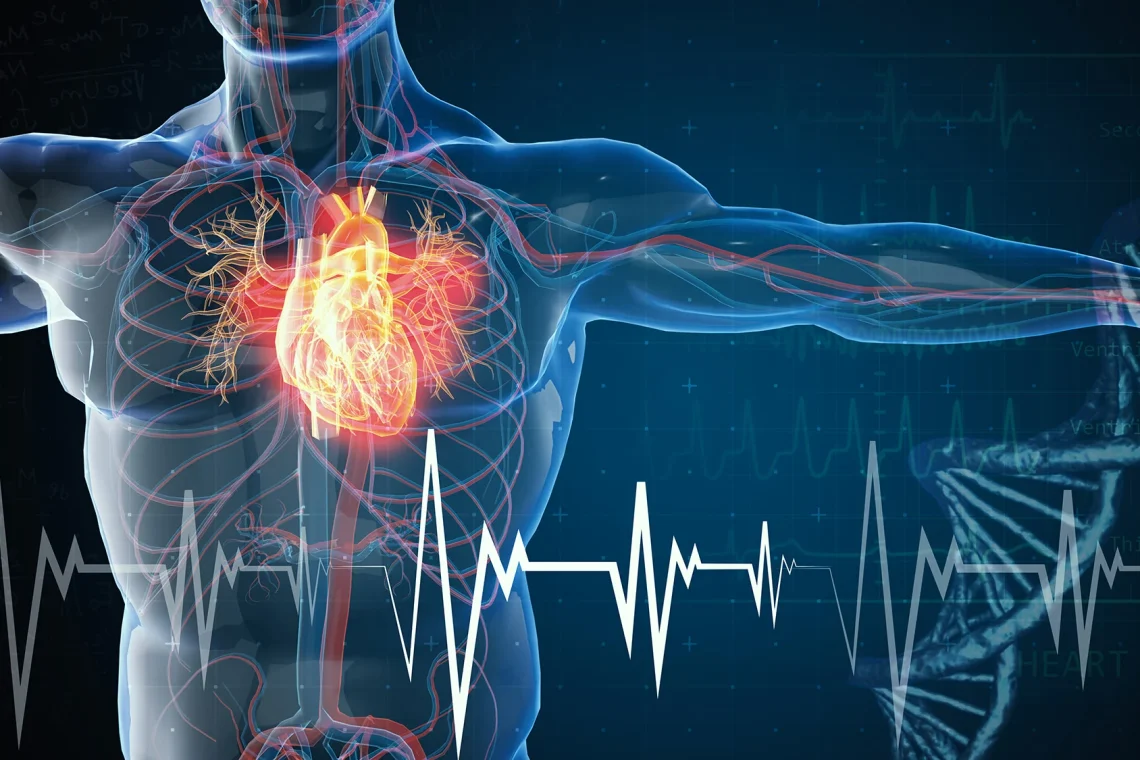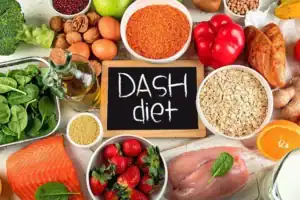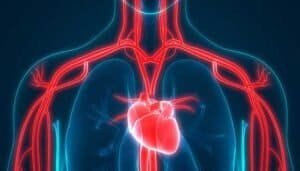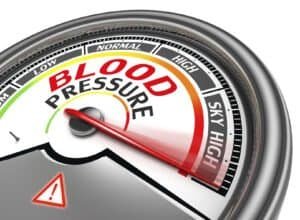Introduction
Maintaining good heart health and a well-functioning metabolism is crucial for overall well-being. At Orla Walsh Nutrition, we specialise in providing evidence-based dietary and lifestyle advice tailored to individual needs. This article explores how exercise can significantly enhance heart health and metabolism, offering practical tips to integrate into your daily routine.
Understanding Cardiometabolic Health
Cardiometabolic health refers to how well your heart and metabolism function together. Key indicators include BMI, waist circumference, cholesterol levels (both HDL ‘good’ cholesterol and LDL ‘bad’ cholesterol), and average blood sugar levels. These metrics help gauge your risk for conditions like heart disease and diabetes. Less than 7% of of American adults have good cardiometabolic health, according to a new study which honed in on levels of blood pressure, blood sugar, blood cholesterol, body fat levels, and presence or absence of cardiovascular disease (heart attack, stroke, etc.).
A significant study, published in Diabetologia and involving over 12,000 participants, revealed some essential daily activities that support cardiometabolic health:
- Walking: 64 minutes per day
- Climbing stairs: 5 minutes per day
- Running: Any amount is beneficial
This study also highlighted the adverse effects of prolonged sitting. Sitting for more than 10 hours a day negatively impacts cardiometabolic health, with more than 12 hours being particularly unfavourable. However, for those with sedentary jobs, these adverse effects can be mitigated by walking for over 90 minutes a day or climbing stairs for 3-8 minutes daily.
The Role of Exercise in Heart Health
Exercise is pivotal for maintaining a healthy heart. Regular physical activity helps to:
- Strengthen the heart muscle.
- Improve blood circulation.
- Lower blood pressure.
- Reduce levels of ‘bad’ cholesterol while increasing ‘good’ cholesterol.
- Control weight, reducing the risk of developing heart disease.
Types of Heart-Healthy Exercises:
- Cardio Exercises: Such as brisk walking, running, swimming, and cycling. Aim for at least 150 minutes of moderate-intensity or 75 minutes of vigorous-intensity aerobic activity weekly. It helps use up the carbohydrate and fats in your blood.
- Strength Training: Helps build strength and maintain muscle, crucial for living longer and supporting quality of life. Include muscle-strengthening activities at least two days a week. It helps the body to store more carbohydrate.
- Flexibility and Stretching: While not directly linked to heart health, these exercises support overall physical health, making it easier and safer to perform cardio and strength exercises safely.
Lets put numbers on this one so that it’s nice and motivating. If you do regular strength training you are about 20% less likely to die from heart disease. But if you do strength training and cardio regularly (aerobic, anaerobic) this number increase to 50%. So, you would be 50% less likely to die from heart disease (other diseases too I might add).
Understanding Metabolism
Metabolism is the process by which your body converts what you eat and drink into energy. This energy fuels all bodily functions, from breathing to moving to maintaining body temperature. The rate at which your body burns energy at rest is known as your basal metabolic rate (BMR). I often refer to this as enough energy to not only keep the lights on, but also to fuel your organs. Resting Metabolic Rate (RMR) is what it takes to fuel your body and move about. Several factors influence metabolism, including age, gender, muscle mass, and physical activity.
Factors Affecting Metabolism:
- Age: Metabolism generally slows with age.
- Gender: Men typically have a higher BMR than women because a greater percentage of them is muscle.
- Muscle Mass: More muscle mass means a higher metabolic rate because muscle tissue burns more calories than fat tissue. At rest muscle needs about 10-15 calories for every kilogram each day. This obviously increases with exercise (see research on that below). The metabolic rate of fat is far less, about 5kcal per kilogram per day and it stays relatively the same regardless of what you’re doing.
- Physical Activity: The organs like the brain, heart, kidney, liver and gut use the most calories when we’re resting. When we move, this changes as it takes energy to move! Regular exercise can also increase muscle mass and help muscle work more.
Exercise and Metabolism
Exercise plays a crucial role in boosting metabolism. Different types of exercise impact metabolism in various ways:
1. Aerobic Exercise: Aerobic exercises, such as walking, running, and swimming, are excellent for improving cardiovascular health. They increase your heart rate and breathing, but at the same time you feel like you’re getting in enough oxygen to fuel the activity you’re doing. When you’re taking it handy, but your heart rate is elevated, fat is fuelling the movement. When you move quicker and your heart beats faster, you’ll switch to using carbohydrate to fuel the activity.
Cardio/ aerobic exercise targets: the WHO recommends we get at least 150 minutes of moderate to vigorous intensity exercise each week, but ideally we would all be getting closer to 300 minutes each week.
Although the 10,000 steps a day started as a random number not based on research, studies have since showed that those who walk more than 8000 steps a day were 51% less likely to die from anything in a 10 year period than those who walked less than 4000 steps a day. Now, if you walked more than 12,000 steps that number increased to 65%.
2. Anaerobic Exercise: Anaerobic exercises, such as sprinting by running or cycling fast on a bike, are high-intensity activities. They involve short, intense bursts of exercise where you don’t feel like you’re getting in enough oxygen to fuel the activity you’re doing. Carbohydrate is the main source of fuel during this type of exercise. This type of exercse can burn calories not just during the exercise but afterwards too. For example, a study done on young males showed that vigorous exercise for 45 min resulted in an extra 190 kcal expended after exercise. This was an additional 37% and the increase in metabolism persisted for 14 hours.
High-Intensity Interval Training (HIIT): HIIT involves short bursts of intense exercise followed by brief rest periods. A study compared the effects of high-intensity interval training (HIIT) and moderate-intensity continuous training (MICT e.g. walking at a fast pace or uphill, or else a light jog) for improvements in body composition. 13 studies were were included which averaged 10 weeks and involved 3 sessions per week . Both HIIT and MICT reduced body fat and waist circumference. There were no significant differences between them. However, HIIT required ~40% less training time commitment so is an excellent choice if you’re short on time or don’t like any form of exercise but want to do something to be healthier (how do you like to rip the band aid off?!). The act of pushing yourself really hard isn’t for everyone. So, if you have the time for for moderate exercise, but could allocate more time to do it, you could achieve similar results as high intensity stuff.
3. Strength training: Resting metabolic rate decreases with age, largely because of an age-related decline in fat-free mass (FFM) (lean tissues like muscle). Over an average lifetime, a person will lose about 40% of their muscle mass. Lean tissues account for about 75% of our metabolism. So, can you counteract this? A study investigated the impact of 16 weeks of strength training in 13 healthy men between the ages of 50-65 years. Average strength levels increased 40% with training. Body weight did not change, but body fat decreased and lean tissues increased. RMR increased 7.7% with strength training and this increase remained significant even when adjusted for teh lean tissue gains So, the benefit is to do with more than just muscle gain.
Practical Tips to Boost Metabolism Through Exercise
- Incorporate Strength Training: Aim to include strength training exercises at least twice a week to build muscle mass.
- Find something you like: When it comes to cardio, push yourself over short period or choose more moderate exertion but over a longer period. Whatever you prefer doing, as liking it is a big part of the battle when trying to be consistent!
- Stay Active: Try to move more throughout the day. Small changes, like taking the stairs or walking during breaks, can add up. Remember – just 5 minutes!
- Balanced Diet: Combine your exercise routine with a balanced diet rich in proteins, healthy fats, and complex carbohydrates to support muscle growth and metabolic function. If you have high blood pressure or high cholesterol, learning to decrease these with foods is simply a matter of knowing what to eat more of.
Integrating Exercise into Your Daily Routine
Incorporating regular exercise into your daily routine is essential for maintaining cardiometabolic health. Here are some practical steps to help you get started:
1. Start with Small Changes:
- Walk More: Aim to walk 64 minutes a day, as suggested by the study on cardiometabolic health. Break it into manageable chunks, such as walking for 10-15 minutes multiple times a day. More than 50% of car journeys are shorter than 2km. Could we be walking instead?
- Take the Stairs: Incorporate at least 3 minutes of stair climbing daily. This small change can have a significant impact on your heart health and metabolism. e.g. walk up the stiars to my office isntead of taking the lift 🙂
2. Plan Your Exercise Routine:
- Set Realistic Goals: Start with achievable goals and gradually increase the intensity and/or duration of your workouts. For example, begin with a 20-minute walk daily and slowly add more time as you build endurance.
- Mix It Up: Incorporate a variety of exercises, including cardio, strength training, and flexibility exercises, to keep your routine interesting and effective.
3. Make It Social:
- Exercise with Friends: Join a walking group, a local gym class, or participate in community sports. Exercising with others can provide motivation and make the activity more enjoyable.
- Family Activities: Include your family in your fitness routine. Activities like hiking, cycling, or playing sports together can be fun and beneficial for everyone.
4. Use Technology:
- Fitness Trackers: Use wearable fitness trackers to monitor your activity levels, set goals, and track progress. Many apps can provide reminders and motivational messages to keep you on track. Remember – keep an eye on your resting heart rate. You want it to reduce when you’re putting in the effort.
- Online Resources: Take advantage of online workout videos, fitness apps, and virtual classes. Orla Walsh Nutrition offers online courses that can be accessed anytime, providing flexibility and convenience.
5. Incorporate Exercise into Daily Tasks:
- Active Commuting: If possible, walk or cycle to work. If you use public transportation, get off a stop early and walk the remaining distance.
- Standing Desk: Use a standing desk or take short walking breaks during long periods of sitting to reduce the adverse effects of prolonged sitting.
- Household Chores: Activities like gardening, cleaning, and even playing with your children can contribute to your daily exercise goals.
6. Stay Motivated:
- Track Progress: Keep a fitness journal or use an app to log your workouts, monitor improvements, and celebrate milestones.
- Reward Yourself: Set rewards for reaching your fitness goals, such as a relaxing spa day, a new workout outfit, or do something special.
Conclusion
Integrating regular exercise into your daily routine is vital for enhancing heart health and metabolism. By starting with small changes and planning a varied exercise routine, you can achieve significant improvements in your overall health. Regular physical activity, combined with a balanced diet, will help you maintain a healthy weight, improve cardiovascular function, and support/ boost your metabolism, leading to a healthier, more active lifestyle.
For those looking to take the next step, you can learn more about boosting your heart health with my online courses: How to Lower Cholesterol and Eat to Lower Blood Pressure. Alternatively you can book a consultation with one of our dietitians for a tailored one-to-one approach to managing conditions.
Frequently Asked Questions (FAQs)
1. How does exercise benefit heart health? Exercise strengthens the heart muscle, improves blood circulation, and helps to manage weight, all of which are crucial for heart health. Regular physical activity lowers blood pressure, reduces ‘bad’ cholesterol levels, and increases ‘good’ cholesterol levels. These changes collectively reduce the risk of heart disease.
2. What types of exercise are best for boosting metabolism? High-Intensity Interval Training (HIIT), strength training, and aerobic exercises are excellent for boosting metabolism. HIIT increases the afterburn effect, where the body continues to burn calories even after the workout. Strength training builds muscle, which increases the basal metabolic rate, and aerobic exercises enhance overall calorie burn.
3. How often should I exercise for optimal heart health? Aim for at least 150 minutes of moderate-intensity aerobic activity or 75 minutes of vigorous-intensity activity per week. Additionally, include muscle-strengthening activities on two or more days a week.
4. Can diet alone improve my metabolism? While diet plays a crucial role in metabolism, combining it with regular exercise yields the best results. A balanced diet that includes protein, healthy fats, and complex carbohydrates supports muscle growth and energy levels, enhancing metabolic function.
5. What are some easy exercises to start with for heart health? Begin with activities like brisk walking, cycling, swimming, or light jogging. These exercises are low-impact and can be easily incorporated into daily routines, helping to improve cardiovascular health without the need for extensive training.
6. How can I stay motivated to maintain an exercise routine? Set realistic goals, track your progress, and mix up your routines to keep things interesting. Exercising with friends or joining a fitness community can also provide motivation and accountability. Reward yourself for reaching milestones to stay motivated.
7. What should I eat before and after exercise? Carbohydrate and water are most important as they fuel exercise, especially high intensity stuff. After exercise, replenish with protein-rich foods and healthy carbohydrates to support muscle recovery and restore energy levels
8. How does strength training affect metabolism? Strength training builds muscle mass, which increases the basal metabolic rate. Muscle tissue burns more calories at rest compared to fat tissue (2-3 time more!), thus boosting overall metabolism
9. Are there any risks associated with high-intensity exercise? High-intensity exercise can be safe if done correctly, but it’s important to start gradually and consult with a professional, especially if you have existing health conditions. Proper warm-up, cool-down, and hydration are essential to prevent injuries.
10. How can Orla Walsh Nutrition help me with my fitness goals? Orla Walsh Nutrition offers personalised consultations, evidence-based advice, and online courses tailored to your specific health and fitness goals. Our team of expert dietitians provides practical guidance to help you achieve and maintain a healthy lifestyle.











